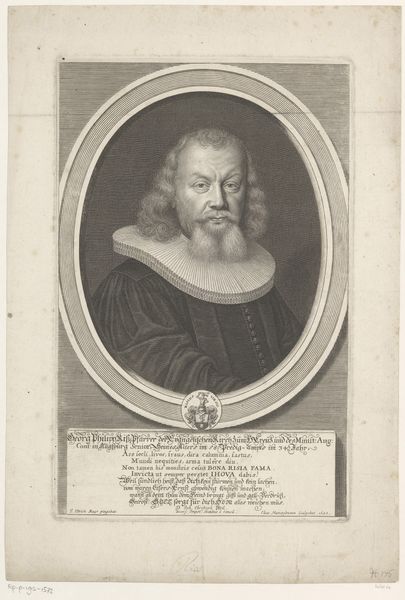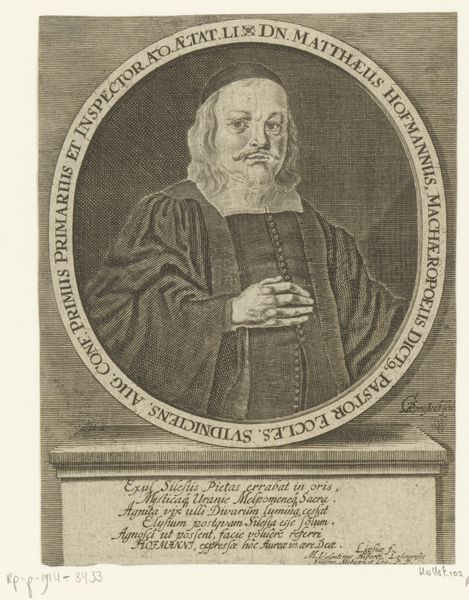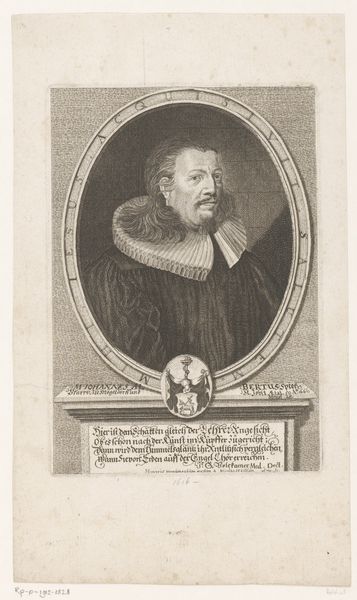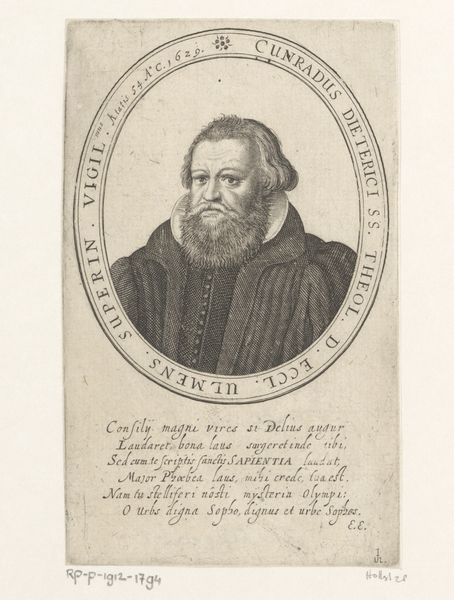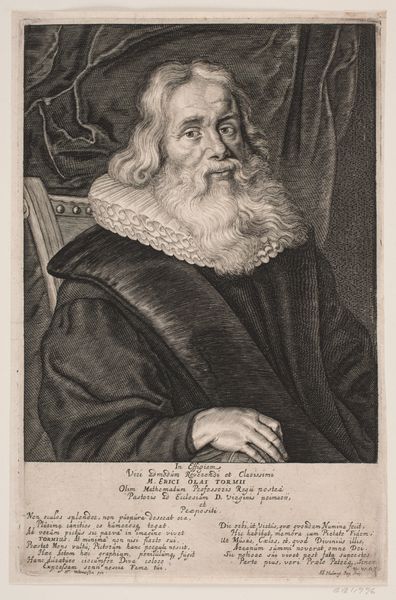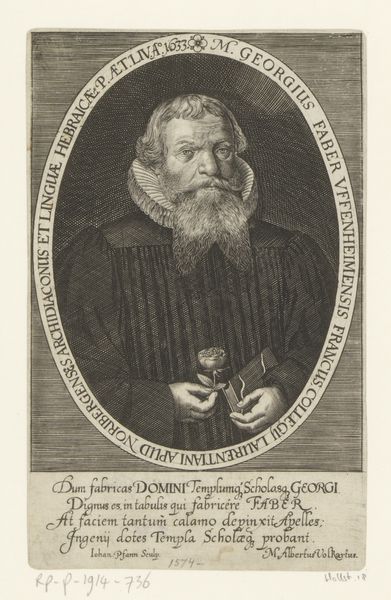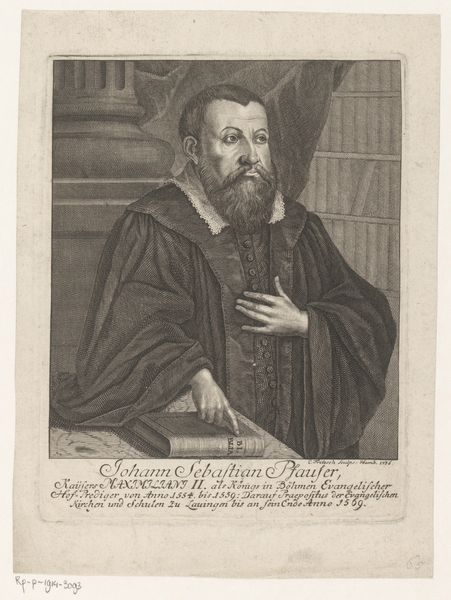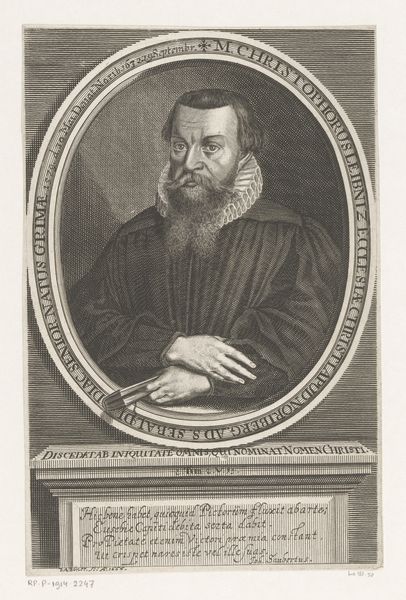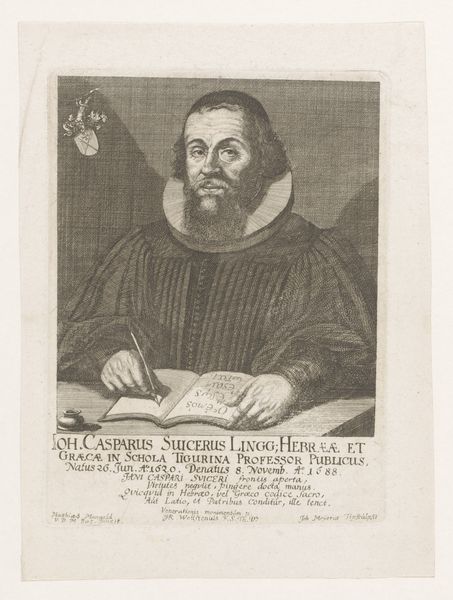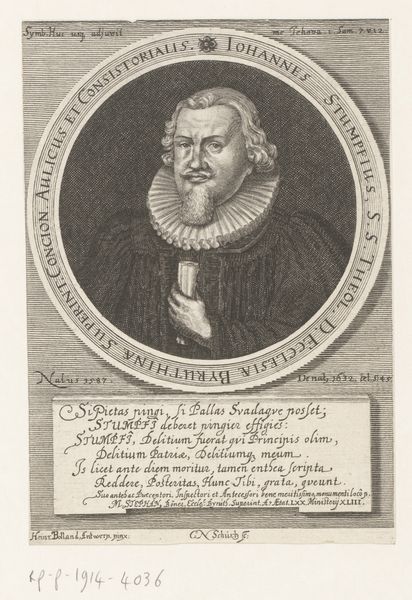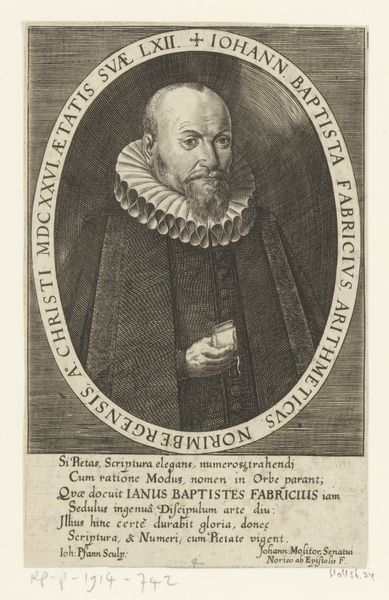
print, engraving
#
baroque
# print
#
old engraving style
#
portrait reference
#
history-painting
#
engraving
Dimensions: height 180 mm, width 128 mm
Copyright: Rijks Museum: Open Domain
Curator: This is a portrait of Johann I Saubert, dating approximately from 1657 to 1720, attributed to Johann Alexander Böner. It is currently held at the Rijksmuseum. The medium is engraving, which contributes to its sharp, detailed appearance. Editor: Immediately striking is the somber mood. It's a study in contrasts – the intricate ruff around his neck versus the darkness of his robes. What stands out is his hand gently placed on what appears to be a book; it has an intimate scale, meant for close viewing, no doubt. Curator: Yes, the engraving process itself is fascinating here. Notice the cross-hatching, which creates the tonal variations giving depth to Saubert's face and garments. The material, likely copper, would have been meticulously worked to produce these lines. And printmaking, by its very nature, lends itself to distribution, influencing public perception through multiple copies of Saubert’s image. Editor: Absolutely. The historical context adds another layer. The rigidness and direct gaze communicates power and authority; these depictions are rarely ever 'candid' or 'unbiased'. There's always an agenda being reinforced; it's impossible not to view this as a symbolic representation, a means of constructing and solidifying social standing. Look at the text included as part of the engraving -- the deliberate act of immortalizing the pastor of Nuremberg speaks volumes! Curator: From a material perspective, consider the paper itself, and the impact that the printing process has on reproducibility and democratizing imagery for scholarly or religious use... Editor: Agreed. I am stuck thinking how we revere these materials and images centuries later for representing certain ideas... When it originally could have served as part of the very real politicization of religion! That hand clasping the book tells us so much! Curator: Exactly! We are reflecting upon these complex interactions between making, labor, dissemination, and impact in very different socio-political landscapes today. Editor: And for all its original purpose, it sparks ongoing conversations of how the medium contributes to how it influences us now.
Comments
No comments
Be the first to comment and join the conversation on the ultimate creative platform.
